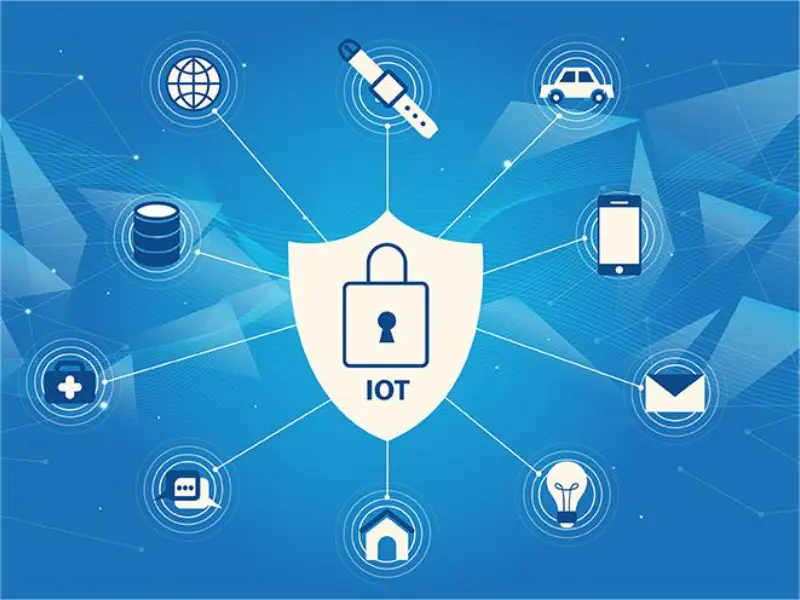- IoT devices are portable, wearable, and implantable devices, creating a ubiquitous and connected universe. Every day of our lives we can see IoT devices functioning: a thermostat with automated temperature control, a wearable device that can monitor heart rates, and a voice-activated street light. We can say IoT devices make up our lives.
- The exponential growth of such smart home devices has multiplied the security threats of IoT. Hackers are increasingly targeting IoT devices to steal data, install malware or use them in botnets. Following IoT device security best practices is now more important than ever.
Internet of Things (IoT) devices have become increasingly popular in recent years. However, the exponential growth of such smart home devices has multiplied the security threats of IoT. Some tips can help prevent hackers from exploiting known vulnerabilities in IoT devices.
The IoT devices
The IoT refers to the pinching of various physical devices through the internet to realise the intelligent interconnection between devices, and its core technology includes sensor devices, communication technology and cloud computing technology.
The concept of the IoT first appeared in 1995, “The Road Ahead” book of Bill Gates. Bill Gates mentioned the concept of the IoT, but limited by the development of wireless networks, hardware and sensing equipment, did not cause the world to pay attention.
Also read: How does cloud computing help IoT devices?
IoT devices are portable, wearable, and implantable devices, creating a ubiquitous and connected universe. Every day of our lives we can see IoT devices functioning: a thermostat with automated temperature control, a wearable device that can monitor heart rates, and a voice-activated street light. We can say IoT devices make up our lives.
IoT devices’ protection advice
The exponential growth of such smart home devices has multiplied the security threats of IoT. Hackers are increasingly targeting IoT devices to steal data, install malware or use them in botnets. Following IoT device security best practices is now more important than ever.
Also read: What are IoT device management examples?
1. Create a secure network and device environment
When purchasing equipment, choose a supplier that focuses on security. If businesses don’t prioritise security, then the devices they supply are likely to have security vulnerabilities that may not be patched in updates. This could leave the device and its users vulnerable to attack.
Implement network segmentation for connected IoT devices, dividing the network into smaller network segments that will work as separate networks. This makes it difficult for threat actors to move laterally in the network and wreak havoc, reducing the attack surface and minimising security concerns.
2. Adopt a solid password and security model
Applying the zero-trust security model, authentication is required every time an IoT device and user tries to connect to the IoT network. This ensures the identity of each user and corresponding device.
Multi-factor authentication (MFA) is an authentication method that requires users to provide two, or more, factors to access a device, which adds an extra layer of security. But be wary of MFA fatigue attacks, which, if successful, can help hackers bypass authentication.
Also, changing the default password and creating an unbreakable password that you can remember are crucial reasons. You can also start using a password manager or generator to create and manage passwords for multiple IoT devices. Otherwise, hackers can easily guess the username and password of a vulnerable device. Once threat actors have control of devices, they can add them to the IoT botnet.
4. Keep your device in optimal condition
Unpatched vulnerabilities can be an entry point for hackers to access IoT devices. Therefore, open the automatic update mode on IoT devices to install all firmware updates as soon as they become available, and be sure to download updates from the device manufacturer’s website. If not, check it manually once a week, keeping IoT devices up to date.
What’s more, IoT devices may come with default privacy and security Settings, turn them on.
5. Disable unused functions
Disabling unused features on IoT devices is another way to protect connected devices from hackers. If all available features and services on the device are activated, it expands the attack surface and hackers will have more opportunities to exploit vulnerabilities in IoT devices. If you find anything unnecessary for a particular use case, disable it to reduce the attack surface.
6. Improve physical security
When securing IoT devices, the physical security of these devices should also be considered. Keep sensitive IoT devices tamper-proof, add a feature that disables connected devices when someone does something to them, and only allow authenticated access to sensitive devices.
In addition to protecting IoT devices, routers and Wi-Fi networks should also be protected, which can be done by changing the router’s default login credentials, changing the default SSID to avoid hackers guessing the router’s manufacturer, using WPA2 or WPA3 encryption, and enabling the router’s firewall.
7. Invest in security solutions
IoT systems are constantly on the radar of hackers and implementing robust IoT security solutions is necessary to protect the IoT ecosystem.
With a powerful IoT security solution, you can view all IoT devices in your network and understand the relevant security risks mentioned above, such as implementing zero-trust policies to prevent unauthorised access, preventing known and zero-day attacks with virtual patching and real-time IoT threat intelligence, evaluating devices with weak login credentials, and more.

